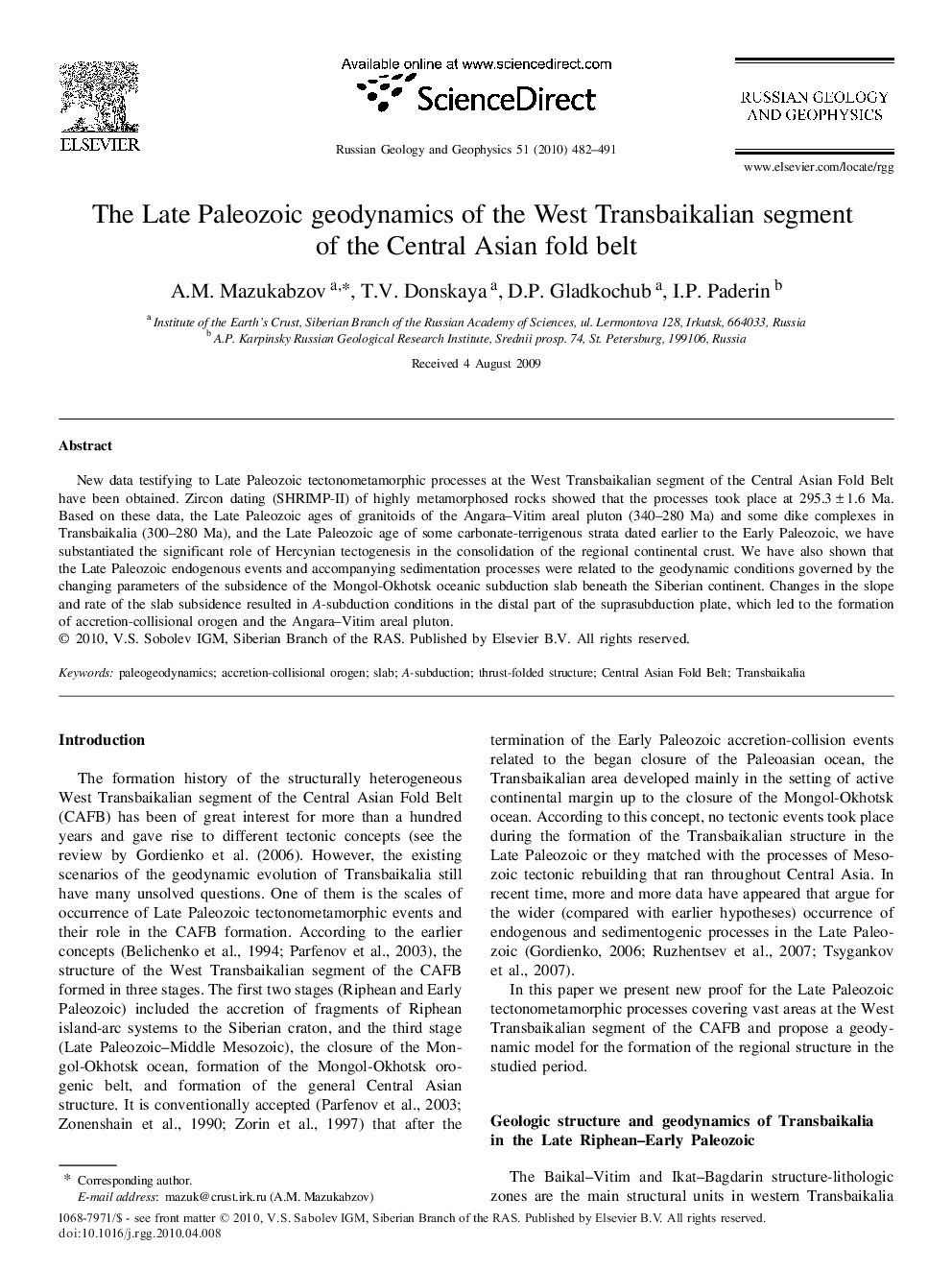| کد مقاله | کد نشریه | سال انتشار | مقاله انگلیسی | نسخه تمام متن |
|---|---|---|---|---|
| 4737933 | 1358214 | 2010 | 10 صفحه PDF | دانلود رایگان |

New data testifying to Late Paleozoic tectonometamorphic processes at the West Transbaikalian segment of the Central Asian Fold Belt have been obtained. Zircon dating (SHRIMP-II) of highly metamorphosed rocks showed that the processes took place at 295.3 ± 1.6 Ma. Based on these data, the Late Paleozoic ages of granitoids of the Angara–Vitim areal pluton (340–280 Ma) and some dike complexes in Transbaikalia (300–280 Ma), and the Late Paleozoic age of some carbonate-terrigenous strata dated earlier to the Early Paleozoic, we have substantiated the significant role of Hercynian tectogenesis in the consolidation of the regional continental crust. We have also shown that the Late Paleozoic endogenous events and accompanying sedimentation processes were related to the geodynamic conditions governed by the changing parameters of the subsidence of the Mongol-Okhotsk oceanic subduction slab beneath the Siberian continent. Changes in the slope and rate of the slab subsidence resulted in A-subduction conditions in the distal part of the suprasubduction plate, which led to the formation of accretion-collisional orogen and the Angara–Vitim areal pluton.
Journal: Russian Geology and Geophysics - Volume 51, Issue 5, May 2010, Pages 482-491